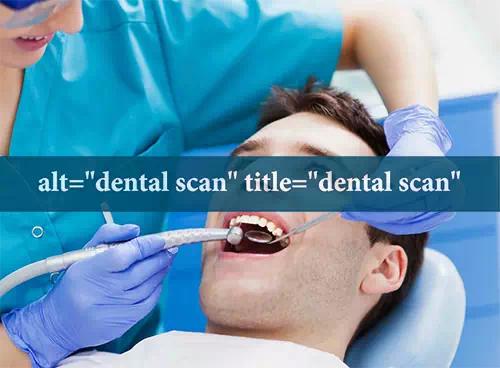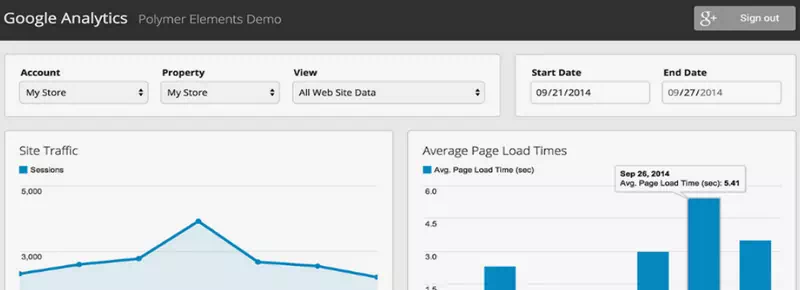Importance of Metadata in SEO Dental Image
For dental practices looking to attract new patients, a consistent online presence is especially important. One of the key additions to this is SEO Dental Image on your web page.
Systems such as Google generally rely on text statistics to recognize, index, and rank websites on the Internet. The image does not include text entries that can be directly perceived by search engines. This is where metadata, consisting of alt text and photo titles, comes into play.
Careful management of image metadata allows engines like Google to index your site effectively and also increases overall visitor interest, ultimately leading to more patients and keeping your dental practice competitive.

Table of Contents
How to Optimize Images for Dental Websites
Expert Image Tips to Boost Your Website’s Keyword Rankings
Choose the modern correct file format

The first step in optimizing photos for dental SEO is choosing the ideal post format. You can usually choose from three important formats: JPEG, PNG, and WebP. Each of these codecs has its own characteristics that determine their usefulness and effectiveness.
JPEG (Joint Establishment of Photographic Professionals)
JPEG is one of the most popular formats for online photos, especially images. The main advantages of JPEG include:
- Convenient for tall photos:
The layout supports up to 16.8 million colors, making it ideal for snapshots and photos with clear color transitions. - Lossy Compression:
JPEG can significantly reduce file length through compression, great photos may lose quality, but in most cases this is acceptable. - Compatibility:
JPEG is supported by all web browsers and photo editors, making it a familiar experience.
PNG (Portable Network Images)
PNG is a lossless layout that has some features that make it a great choice for certain types of images:
- Transparency:
PNG supports transparency, making it ideal for logos, icons, and various graphic elements that require a transparent story. - Great photo:
photos are saved without loss of quality, which is especially important for shots of text content and illustrations. - Larger sizes:
Due to lossless compression, PNG images tend to be larger in size than JPEGs, which can slow down web page loading and have a knock-on effect on search engine optimization.
WebP
WebP, a brand new photo format developed by Google, offers all the benefits of both of the above formats:
- Efficient Compression:
WebP can compress images 30% better than JPEG without significantly compromising quality. This allows pages to load faster, which directly impacts SEO performance. - Transparency support:
Like PNG, WebP supports transparency, making it versatile for any photo or image. - Great Use:
Although WebP is no longer supported in some older browsers, its appeal and support are growing, making it the format of choice for Internet images.
When choosing an image format for a dental website, it is important to keep both image quality and file size in mind. JPEG may be preferred for high quality photos, PNG for images with transparency, and WebP combines the benefits of both, providing a better compromise between usability and size. This is an important issue to improve user experience and therefore dental SEO.
Compress large images for faster loading

Image files that are too large can seriously slow down the loading speed of your internet site, negatively impacting the user experience. When site visitors open a page and notice that photos are taking a long time to load, it can cause irritation and a desire to leave the site.
Main problems:
– Loading delays: Browsers take longer to process and display large images, which can cause delays in web page rendering.
– Impact on user behavior: If a web page fills too slowly, users may become bored and close the tab before loading is complete.
Search Engine Optimization:
– Search Engine Ranking: Website loading speed is important to engines like Google, so fast websites have a better chance of ranking higher in search effects.
– Increased time spent on a website: Users who like a website to load quickly tend to spend more time on it, which can also affect ratings.
Solution: Photo Compression
To avoid problems with huge images, it is very important to compress them before uploading them to the site. Different image formats have their own characteristics:
– WebP: optimized for the web, provides high quality files in smaller sizes.
– PNG: High precision and transparency are maintained, but the size can be huge.
– JPEG: Suitable for photographs and complex images, it can significantly reduce the recording size at the cost of a pleasant loss.
Photo compression programs:
– Adobe Photoshop: Allows you to customize image compression settings.
– Online services such as TinyPNG, TinyJPG and Kraken.io provide automatic image optimization.
It’s important to find a balance between document size and premium quality when compressing photos to avoid over-pixelation and maintain the user’s viewing experience. Before you import your optimized snapshots into your website, it’s a good idea to test them to make sure they’re good enough for your users. Such photos will increase loading speed and will not put off visitors, which can definitely impact your search engine rankings and increase the number of visitors to your website.
Post high-quality images

Top-notch images are critical to creating a visually appealing and professional website, especially for dental clinics. Blurred or low-quality images can be distracting to visitors, impact their perception of your practice, and potentially impact your site’s search engine rankings.
Benefits of Using Quality Images
- Professionalism and visual appeal:
Clear, highest quality images demonstrate the professionalism of your practice and enhance the visual experience. - Trust and influence:
These leave a favorable impression on potential patients, making them more likely to choose your practice. - Benefits of SEO:
Search engines prefer sites with top-notch content, including images, which can improve your ranking.
Stock photos: advantages and disadvantages
Choosing between stock photos and investing in unique images can be a daunting task. Let’s look at the pros and cons of each image type.
Benefits of stock photos:
- Availability:
Stock photos are easily available from a variety of online sources and are often inexpensive or even free. - Fast and convenient:
Using stock photos is a quick way to get images without investing a lot of time. - Using AI:
Tools such as DALL-E2 and Midjourney enable the creation of high-quality synthetic images quickly and inexpensively.
Disadvantages of stock photos:
- Lack of uniqueness:
Stock photos can be used by many companies, which reduces the uniqueness of your website. - Limited Authenticity:
They may lack personality and may not accurately represent your practice and services. - Level of Relevance:
It is critical to select images that accurately reflect your dental practice and its distinctive features.
Individual photography: advantages and disadvantages
Previously, professional photography required significant costs and time, including closing the office while filming. Today, however, technological advances offer flexible alternatives.
Advantages of individual photography:
- Authenticity and Personalization:
These photographs can accurately portray the unique characteristics of your practice and services. - Authentic Moments:
This allows you to capture real moments and establish a more personal connection with potential patients. - Convenient shooting:
Modern cell phone cameras allow you to take high-quality photos and videos without the need to turn to professional photographers.
Modern technologies and mobile devices
Nowadays, mobile phone cameras have reached such a level that they can produce professional-grade images and videos. Here are some benefits:
- Cost-effective:
Using a cell phone camera is a more cost-effective option compared to hiring a professional photographer. - Convenience:
shooting can be carried out at a time convenient for you, without disturbing the work of the office. - Quality and Features:
Modern mobile devices offer high image quality, filters and other features that simplify and improve the shooting process.
In conclusion, it is important to understand that choosing images for a dental website should be based on a combination of authenticity, quality, and relevance. Using high-quality images (standard or custom) can improve the perception of your practice, attract new patients, and improve your search engine rankings.
Save the image file with a descriptive name

Before you upload an image to your website, it is important to name the file correctly. Not names like “img_2.jpg” or “photo3.jpg” as this limits the potential for improving your web page’s SEO. Naming your images correctly helps search engines like Google understand the content and context of your photos, which ultimately improves your web page’s ranking in search results.
Specific tips for naming pictures:
– Use descriptive titles:
Instead of vague and generic report titles, use descriptive and applicable key phrases. For example, if you are showing the results of dental implants, be sure to title the report “implants-before-after.jpg.” This not only complements the post description, but also optimizes SEO capabilities.
– Match Page Keywords:
Make sure the report name matches the keywords of the page on which the image might appear. If the web page is optimized for “SEO Implan Images”, include this keyword or its synonyms in the image title.
– Include hyphens:
Use hyphens to separate words in file names, such as “dental-implant-nobel.jpg”, rather than underscores. Hyphens are useful for search engines such as Google and Yahoo to correctly identify character phrases.
– Avoid underscores:
Underscores can make it difficult for search engines to interpret report names as connectors in laptop languages. Therefore, choose hyphens in document names instead of underscores.
– Stay away from vertical lines:
Although some people prefer to use them (|) in document names, this can lead to confusion. For example, “fast | “dental implantation” is likely to be misinterpreted as two separate factors, leading to specific consequences compared to “fast dental implantation”.
Search Engine Optimization Benefits from Correct Image Naming:
– More desirable visibility and ranking:
Search engines remember the title of the post when indexing the photo. The more accurate and applicable the schema, the higher the likelihood of ranking for relevant queries.
– Increased relevance and pay-per-click:
Descriptive post names no longer serve the most user-friendly search engines like Google, but also users. Users are more likely to click on a photo that perfectly matches their search.
– Experienced Person Enjoys:
Including keywords in file names improves content organization and professionalism, thereby increasing overall user interest and trust in the website.
By following these guidelines, you can optimize your pixel and improve your website’s SEO.
Properly optimize alt text
Alt text, also known as sentence text, is a brief description of a photo that conveys its message while the photo is not visible. this is very useful for making websites accessible, especially for people with low vision who rely on screen readers. This equipment scans textual content on a website, including alt text, to help customers understand the content of a photo.
Additionally, alternative text content plays an important function in search engine optimization (search engine optimization). Systems such as Google, which includes Google, use alternative text content to implement the content of photos and their relevance to the website. The more familiar a search engine is with the content of your photo, the more likely it is that your site will rank for relevant keyword phrases.
To decorate alternative text content for dental exercises, it is very important to follow a few key rules:
- Be concise and precise:
Alt text content should provide a concise and accurate description of the contents of the image, helping screen readers and search engines like Google and Yahoo to recognize it easily. - Include relevant keywords:
Keyword phrases such as “dentist,” “dental care,” and “teeth cleaning” can boost SEO, but avoid overusing keywords to avoid penalties from engines like Google. - Keep your photography relevant:
Alternate text content should directly relate to the content of the image. For example, if the image shows a dentist brushing teeth, alternative text content could be “dentist brushing patient’s teeth,” suggesting the right content and appropriate keywords. - Use specific alt text:
Avoid using the same alt text for unique shots. Each alt text should be specific and relevant to the specific image to increase its accessibility and SEO. - Avoid long descriptions:
Keep alt text content quick, usually one or two sentences. If more detailed information is important, don’t forget to include a long description or include additional entries within the body text next to the image.
By following these guidelines, you can create powerful alt text for photos on your dental practice website to increase consumer interest and improve your search rankings.
Use long-tail keywords for specific queries

Long-tail keywords play an critical role in cutting-edge seo (search engine optimization) strategies. they’re more specific and focused search terms, that are particularly precious for attracting ability sufferers looking for specific dental services or facts on your area.
Advantages of using lengthy Tail keywords.
– Much less competition:
due to the fact long-tail keywords are normally much less regularly used, there’s much much less opposition for them than for more standard terms. Which means that your web page has a higher threat of having to the pinnacle of seek results.
– Better Relevance:
long tail seek queries are extra specific, making them more applicable to customers who recognise precisely what they need. This increases the probability that a site traveller becomes your patient.
– High-quality targeting:
imagine you provide a specific provider, such as pediatric dentistry. via using long-tail key phrases inclusive of “high-quality pediatric dentist in [city]” or “affordable pediatric dentist,” you can attain exactly the target audience that is inquisitive about these services.
Optimizing photos for neighborhood search
While optimizing pics for nearby seek, it’s worth considering lengthy-tail keywords associated with your services and area of interest. This is where key-word placement is vital:
- Photograph Titles:
Use informative titles in your pictures. rather than the overall call “img1234.jpg”, rename the record to something like “satisfactory-kid’s-dentist-in-metropolis.jpg”. - Textual content (alt text):
Alt text facilitates serps recognize what is in a picture. example: rather than “physician,” use “pediatric dentist with toys for youngsters in [city].” - Captions:
Captions beneath snap shots are often examine via customers. It also helps with seo when an extended tail key-word is used within the signature textual content. as an example: “Our exceptional pediatric dentist in [city] is constantly happy to peer little patients.” - Examples for the pediatric dentist
in preference to “pediatric dentist” use:
“skilled pediatric dentist in [city]”
“Pediatric dentist with high-quality critiques in [city]”
“expert in pediatric dentistry in [city]”
Integrating these practices into your content material creation strategy will assist your web site rank excessive in seek effects for focused queries, which in turn will appeal to more relevant traffic and potential patients.
Hence, optimizing photographs and using long-tail keywords are effective tools for enhancing seo and attracting extra focused site visitors on your website online.
Use captions for images

Image captions are crucial in the promotion of dental services through online channels. They offer extra information about the visuals displayed on your website and aid in enhancing their visibility on search engines. Descriptions placed below an image may incorporate relevant terms, thereby assisting search engines in identifying the subject matter of the image and its connection to adjacent text.
Well-crafted image captions ought to be brief and accurate, effectively outlining the content of the image and its relevance to dental care. For instance, a picture illustrating a dental procedure could be accompanied by a label stating “procedure for installing dental implants” to clarify its intent for users and search engines.
In order to maximize the impact of your content, it is necessary to adhere to grammar rules and proper sentence structure. A meticulously crafted caption enhances the comprehension of material by website visitors. Given the attention-grabbing nature of titles and descriptions, their quality significantly shapes the overall user experience.
Although often underestimated, captions serve as a valuable tool for enhancing search engine optimization efforts. Ensuring that search engines grasp the context of images is vital, and appropriately devised labels can greatly contribute to improved indexing and subsequently higher website rankings. The utilization of well-thought-out image captions is thus a vital component of dental marketing strategy and positively influences SEO.
Regular monitoring and analysis of image performance

Everyday tracking and evaluation of photograph overall performance in search results are critical elements of optimizing your dental search engine optimization strategy. To successfully manipulate this manner, it’s far really worth the usage of gear inclusive of Google Analytics and Google seek Console.
Those tools help you track key metrics along with clicks, impressions, and click-thru price (CTR).
- Google Analytics:
This tool permits you to tune which pages to your site receive the maximum site visitors and examine which pix on the ones pages can contribute to that traffic. Google Analytics can be set up to screen specific dreams and occasions to music photo interactions, along with clicks on pix or time spent by way of users at the photograph web page. - Google search Console:
This tool permits you to peer which pictures are displaying up in seek effects and which ones are becoming clicks. Google search Console presents impressions, clicks, and CTR statistics for each image, allowing you to measure its effectiveness in using visitors.
Data analysis:
- Clicks and CTR:
studying the number of clicks on photographs and the ratio of those clicks to overall impressions (CTR) will help determine which pictures are most appealing to users. A excessive CTR indicates that the picture is attractive and relevant to go looking queries. - Impressions:
The number of times pix are proven in seek results indicates their visibility. If an picture has lots of impressions however a low CTR, this can be a signal that the image needs optimization (which includes enhancing photo satisfactory or changing alt text). - Time on web page:
Google Analytics can analyze how a whole lot time customers spend on pages with unique pictures. this may supply an idea of how useful and interesting the image is to them.
If you want optimized images on your website, contact us
Contact us.





